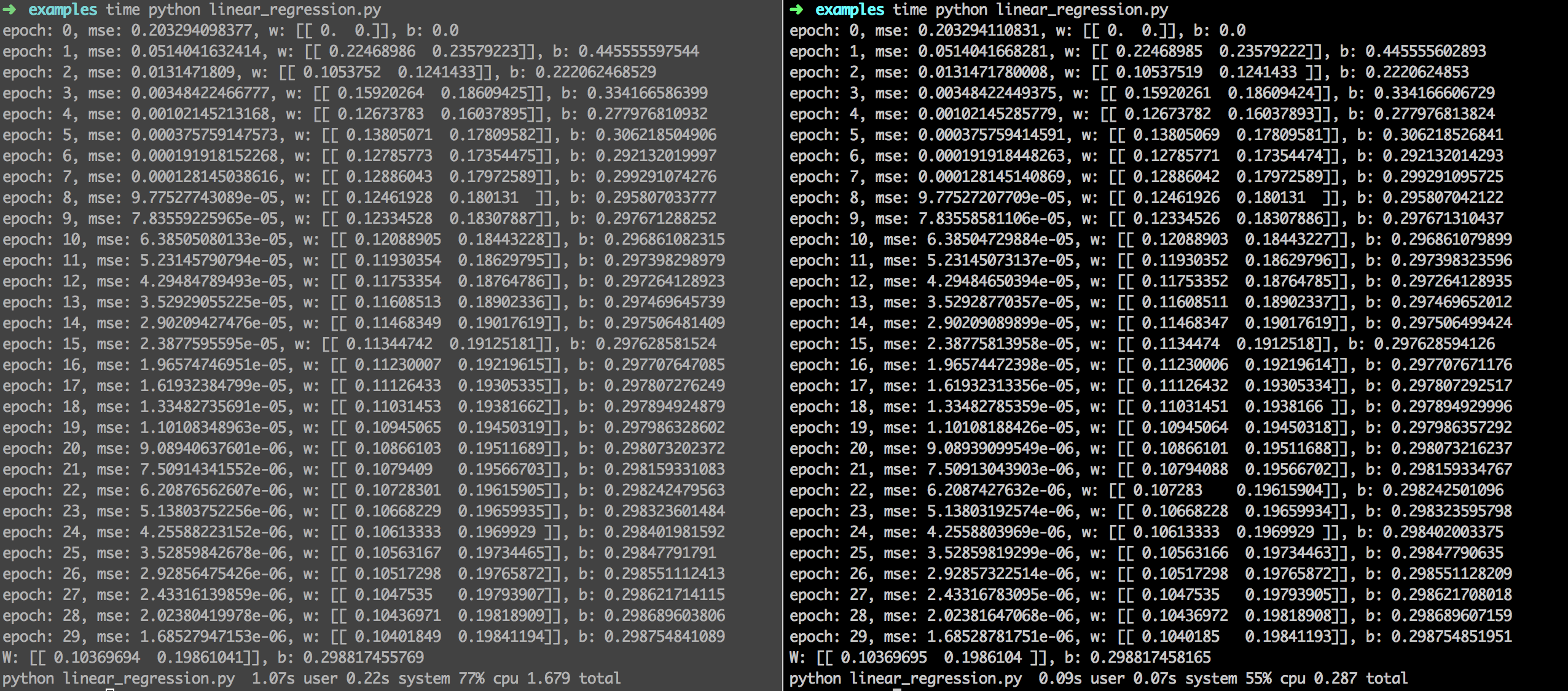A toy of tensorflow for exploring the core of tf, including operation, DAG, session and optimizer.
- Vectorized operations
- DAG
- Automatic partial derivative and chain rule
- Back Propagation
- GradientDescent Optimizer
- Vectorization Linear Regression
import toytensorflow as tf
import numpy as np
#real data
x_data = np.float32(np.random.rand(2,100) )
y_data = np.dot([0.1,0.2], x_data) + 0.3
#ops & DAG
W = tf.Variable([[0.0,0.0] ], name='weight')
b = tf.Variable(0.0, name='bias')
X = tf.placeholder(tf.float32)
Y = tf.placeholder(tf.float32)
predict = tf.matmul(W, X) + b
loss = tf.reduce_mean(tf.square(predict - Y) )
learning_rate = 0.5
optimizer = tf.train.GradientDescentOptimizer(learning_rate)
train_op = optimizer.minimize(loss)
init = tf.initialize_all_variables()
#run
feed_dict = {X:x_data, Y:y_data}
with tf.Session() as sess:
sess.run(init)
for epoch in range(30):
mse = sess.run(loss, feed_dict=feed_dict)
print 'epoch: {}, mse: {}, w: {}, b: {}'.format(epoch, mse, sess.run(W), sess.run(b))
sess.run(train_op, feed_dict=feed_dict)
w_value = sess.run(W, feed_dict=feed_dict)
b_value = sess.run(b, feed_dict=feed_dict)
print('W: {}, b: {}'.format(w_value, b_value) )The APIs and performance of tensorflow vs toytensorflow are the same. The right one is toytensorflow.

- More operations
- More optimizers, eg momentum/adam/adagrad
- More examples, eg logisticregression/mlp